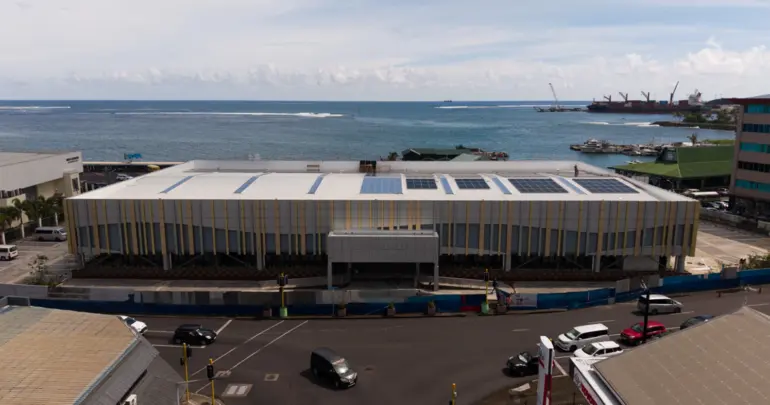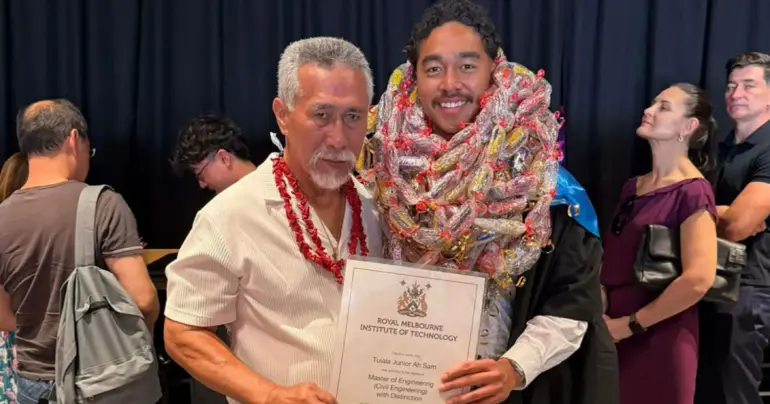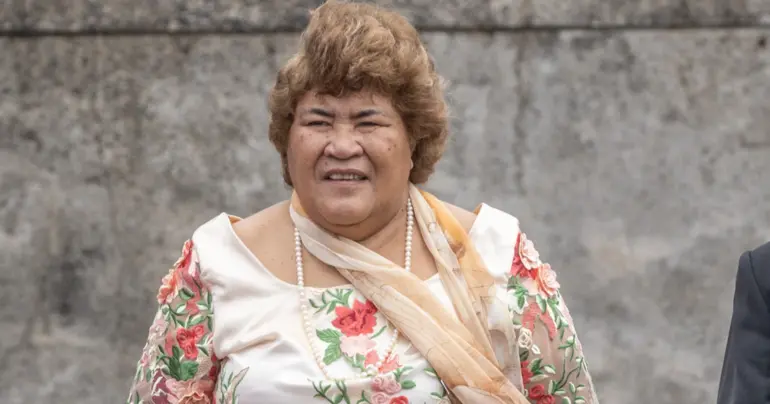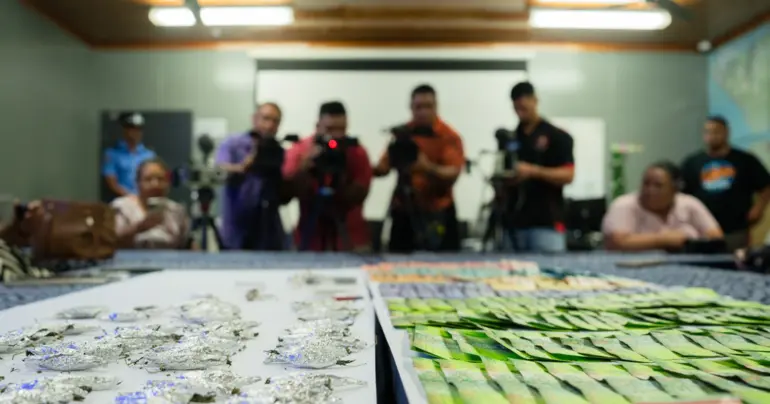U.N. moving quickly on vaccine drive
 By Sapeer Mayron
•
20 April 2021, 5:00PM
By Sapeer Mayron
•
20 April 2021, 5:00PM
The United Nations is happy Samoa is moving quickly with its vaccination drive against COVID-19, after the caretaker Prime Minister and caretaker Minister of Health received their first shots on Sunday.
Tuilaepa Dr. Sailele Malielegaoi and Faimalotoa Kika Stowers Ah-Kau both got their first doses of the Oxford University-AstraZeneca vaccine on Sunday in a modest launch of Samoa’s rollout.
Resident Coordinator for the United Nations Dr. Simona Marinescu confirmed that 33 others were also vaccinated on Sunday, and from Monday the target is 400 people per day.
On Election Day, 24,000 doses arrived in Samoa and the clock is ticking: they expire on Monday 31 May.
“Everybody is moving as quickly as possible, it’s quite commendable so I am actually very happy Samoa is moving this fast,” Dr. Marinescu said.
“I am hoping everything will go smoothly, without any complications. We want people to be immunised and be able to travel, and resume life as much as we can at this point in time, considering there are still new variants appearing.”
She said while the Ministry of Health Director-General Leausa Dr. Take Naseri had last weekend indicated the rollout would wait for advice on the safety of the AstraZeneca vaccine, the latest World Health Organisation recommendations say it is safe to use.
“We had our meeting here and asked W.H.O. to provide any update, and they are all saying that while links were made on an empirical basis with the vaccine, there is still not enough research to make that strong connection and make a case,” she said.
“Indeed the number of cases is very limited of people who were affected […], it’s a very, very low number. The vaccine is ultimately voluntary.”
The local vaccination work to deliver the first 24,000 doses is running smoothly, Dr. Marinescu said.
“Today they started with two sites, one in the WHO building on the lower level and the other is at the hospital where the routine vaccination takes place.
“They have a plan to vaccinate 400 people per day and we talked about the healthcare workers and frontline workers. Those do not include only the Ministry of Health personnel, there are other people who are at the airport supporting repatriation, so everybody involved in that are considered frontline workers.”
The 24,000 doses that arrived in Samoa on Election Day expire on Monday 31 May, and M.O.H. intends to ensure they all get used.
While they are starting with 400 people per day, Dr. Marinescu said they will be ramping up capacity in order to reach closer to 600 a day or more, in order to ensure the doses don’t go to waste.
The second batch of between 55,000 and 100,000 doses of vaccine is meant to be headed for Samoa from Thursday 22 April, but with global delays, it is not clear exactly when the batch will arrive, though the Ministry of Health expects it will be in May.
Dr. Marinescu said it will be from that second delivery that the first group of 24,000 people will get their second shot, with the current medical advice suggesting there be a 12-week-wait between the two doses.
While originally Samoa had been preparing to vaccinate the population in more stratified phases, the vaccination will be given instead in just two phases.
First will be the frontline workers which include workers involved in screening and management of people with suspected disease conditions, those dealing with emergencies and those that are exposed to the risk of acquiring [or] spreading the disease because of their profession.
The second phase is everyone else aged 18 years and above.
Dr. Marinescu explained that under the context of having a limited vaccine supply with a short shelf life, the country has opted to move more efficiently than to split up groups into ages or vulnerabilities.
The phases are mapped out in accordance with World Health Organisation advice for this context.
“From the initial thinking of the National Deployment and Vaccination Plan, they revisited it afterwards because they want to be able to distribute the 24,000 vaccines as soon as possible.
Under the current plan there are 160 teams of vaccinating staff ready to begin delivering vaccines nationally. It is not known exactly where they will be deployed to yet.
There will also be outreach teams deployed to reach people who may not be able to get to a vaccine site for various reasons.
The U.N. Development Programme (U.N.D.P.) has been supporting the Ministry of Health with the tools and technology to digitize vaccine records so that there will be accurate data of who has had their first and second shots.
Vaccination teams will be using computers to enter patient data and record their date and time of vaccines given.
Dr. Marinescu said this is not only important for Samoa’s records but for Samoans, when they want to travel and countries begin to expect proof of COVID-19 vaccination as a pre-entry requirement.
“We understand that the COVID-19 vaccination is tracked using digital means because obviously it is extremely important to have those records of vaccinations. At some point there might be a vaccine passport required so very accurate information must be stored.
“We received assurance that that is the approach that is being taken right now. I am sure if you go to the two sites to see what is happening, you will be able to see they are storing the information using possibly the laptops the U.N.D.P. gave to the Ministry of Health or additional equipment they procured from other sources as well.”
So far local media has not been permitted to attend the vaccine clinics to record or take photos.
The National Emergency Operations Centre will be addressing media and the nation at noon on Tuesday.
Tags
 By Sapeer Mayron
•
20 April 2021, 5:00PM
By Sapeer Mayron
•
20 April 2021, 5:00PM











